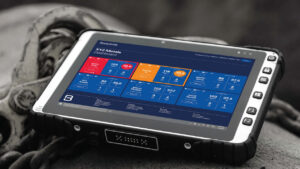Fighting Fatigue in the Workplace
According to The National Safety Council[1], fatigue is estimated to cost employers $136 billion in health-related productivity loss annually. However, it is one of the most overlooked risks in the workplace. It is a hazard that can compromise overall well-being and safety that can lead to catastrophic consequences.
While fatigue previously may have been difficult to measure, monitor and manage, it no longer needs to be. There are many things we can do to mitigate this common risk that can affect everyone.
What is Fatigue?
Fatigue is complex. It can include lethargy and drowsiness, fueling subjectivity around it. In today’s workplace, fatigue is often defined as a decline in performance and/or lack of energy caused by sleep loss or prolonged physical or mental exertion—without having sufficient recovery or rest. Individuals have substantially different tolerance for fatigue and sleep requirements, and this can cause some employees to be at a greater risk than others.
People who frequently move heavy loads or operate equipment or machinery are at risk of fatigue from physical exertion. Mentally taxing work could involve highly repetitive tasks or movements; high concentration levels under challenging conditions; working in awkward postures; or exposure to constant noise. Other risk factors include environmental temperatures, minimal light exposure, vibration, humidity, stress and lack of sleep. Fatigue is also exacerbated during the winter, when many employees start and end their working days in darkness.

The gathering of data can help identify and address the underlying causes of fatigue, allowing schedules to be designed around optimal performance times. (photo courtesy Bodytrak)
Risk in the Workplace
Mental and physical fatigue can negatively impact cognitive performance, reaction times, concentration, short-term memory and decision-making. However, it shouldn’t be considered a purely performance-related issue, as it increases the risk of severe accidents and ill health. Fatigue is heightened when workers are subject to multiple risk factors. In fact, in its “Fatigue in the Workplace: Causes & Consequences of Employee Fatigue”[2] report, the NCS found that 97% of workers have at least one workplace fatigue risk factor, while more than 80% have two or more.
What Can Be Done?
If organizations can understand, monitor and manage fatigue, they can work toward improving performance, health and safety practices, and employee wellbeing. There are several measures that organizations can take to minimize the risk among staff.
Scheduling and Work Environment
Organizations can help reduce fatigue risk by considering how staff work and their environment. For example, performing a single task across the working day can become monotonous. If staff have varied work and can switch between tasks, they are more engaged and less likely to become fatigued. Allowing time for breaks in dedicated areas where people can truly switch off from their tasks can be beneficial.
Creating the ideal working environment requires plenty of natural light, comfortable ambient temperatures and low noise levels. Understandably, there will be instances where this is not possible, i.e., those operating machinery or working in refineries. It then becomes more important to put other measures in place to help counter the effects.
Shift workers can quickly become fatigued if they don’t have sufficient time to adjust to different sleep schedules required for their jobs. The NSC found that 62% of night shift workers complain about sleep loss. Carefully planning work schedules and rest between shift patterns is essential. An effective approach is to prepare for a gradual transition from day shifts to night shifts (or vice versa), or schedule a couple of days off between to allow sufficient time to adjust. These measures will help ensure employees are more likely to arrive at work in a rested state, ready to perform.

New wearable technology, such as the in-ear physiological monitoring device from Bodytrak, is opening up opportunities for organizations to accurately measure, monitor and manage fatigue. (photo courtesy Bodytrak)
Measuring, Monitoring and Managing Fatigue
Traditionally, fatigue has been hard to understand. It is relatively subjective, and few tools available can reliably measure it. Some organizations implement blinking technology that looks at the frequency an employee blinks. The suggestion is that the more blinks they make, the more tired they are. Others use performance metrics over time or ask employees to judge how tired they are on a “Rating of Fatigue” scale of 1-10.
New commercial vehicles can detect a driver swerving out of their lane and alert them to take a rest. While potentially indicative of employee fatigue, these measures all have their downsides, from difficulty implementing in a range of work environments to the subjectivity of responses and lack of personal awareness—or the measure intervenes far too late.
New wearable technology, such as in-ear physiological monitoring devices, opens up opportunities for organizations to accurately measure, monitor and manage fatigue. Such devices monitor workers in real-time, so if the device wearer approaches a fatigue threshold, they and a supervisor are notified and can take immediate action. This approach reduces the risk of incidents; helps maintain worker health and well-being; and improves overall performance.
Longer term, data can help identify and address the underlying causes of fatigue, allowing schedules to be designed around optimal performance times. For example, a long-haul trucking and logistics company realized their drivers were prone to fatigue as they covered great distances over many working hours. They adopted physiological monitoring technology to monitor and detect fatigue. They could tell drivers to take a break well before they became too tired and dangerous to themselves and other road users.
Sleep Hygiene Education
Busy modern lifestyles can mean poor sleep which, without time for rest and recovery, can result in workers suffering perpetual or accumulating fatigue. An NSC survey[3] reported that 43% of American workers admit that they do not get enough sleep— affecting their ability to make critical decisions at work. Fatigue can result from disrupting circadian rhythms, also known as the body’s biological clock. Circadian rhythms are highly affected by the natural cycle of daylight, and varying exposure to light causes a disruption.
Organizations are starting to recognize this and understand the importance of sleep for employee health, performance and safety. They are taking more responsibility to educate their teams about sleep and sleep hygiene as part of regular health and safety training. This generally incorporates budgeting time for sleep and outlining optimum sleep conditions. It covers optimal sleep environments; being a darkened bedroom between 60°-67°F; and avoiding bright and screen light at least 30 minutes before bed.
You Can’t Manage What You Can’t Measure
Fatigue should be an essential risk factor for any business, and even taking simple measures can have an impact. Technology advancements give organizations the tools to understand and proactively manage fatigue.
About the Author
James Davis is Senior Physiologist at Bodytrak. He has an MSc in Applied Physiology. James helps organizations understand their teams’ physiological responses to extreme heat and other workplace challenges. He uses physiological measures to identify dangerous situations before incidents occur. For more information, visit www.bodytrak.co .
[1] Fatigue – You’re More Than Just Tired, NSC
[2] Fatigue in the Workplace, Causes and Consequences of Fatigue, NSC
[3] Fatigue in the Workplace, Causes and Consequences of Fatigue, NSC
Share on Socials!
Air Quality Instrumentation: A History
Heat Stress Monitoring Program Solutions
For Safety’s Sake: Managing Industrial Dust and Fumes
Leaders in Industrial Hygiene
Council for Accreditation in Occupational Hearing Conservation (CAOHC)
Subscribe!
Sign up to receive our industry publications for FREE!











